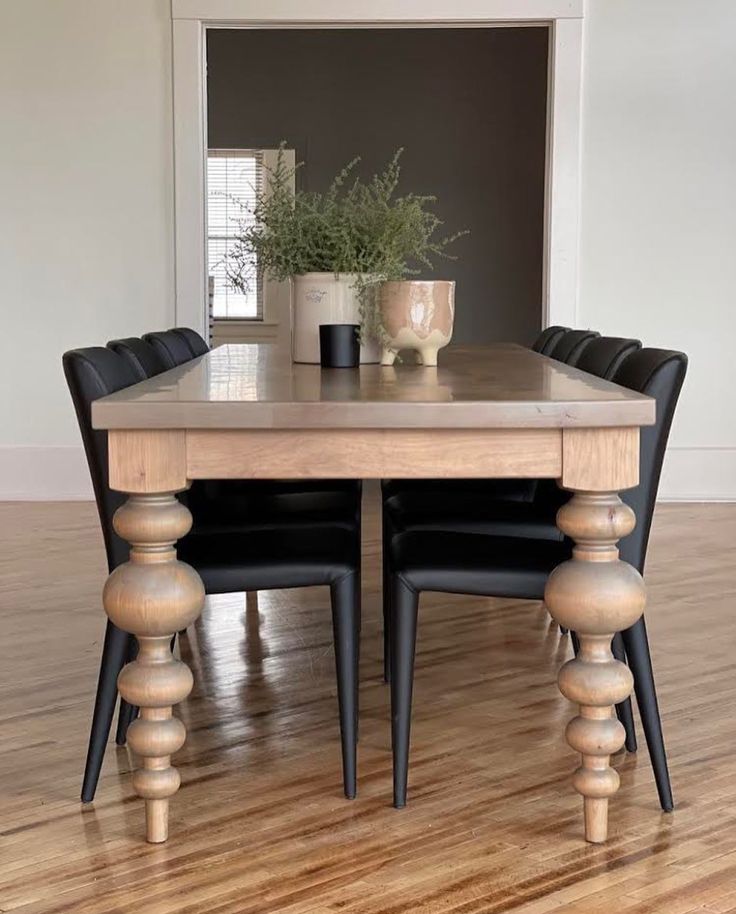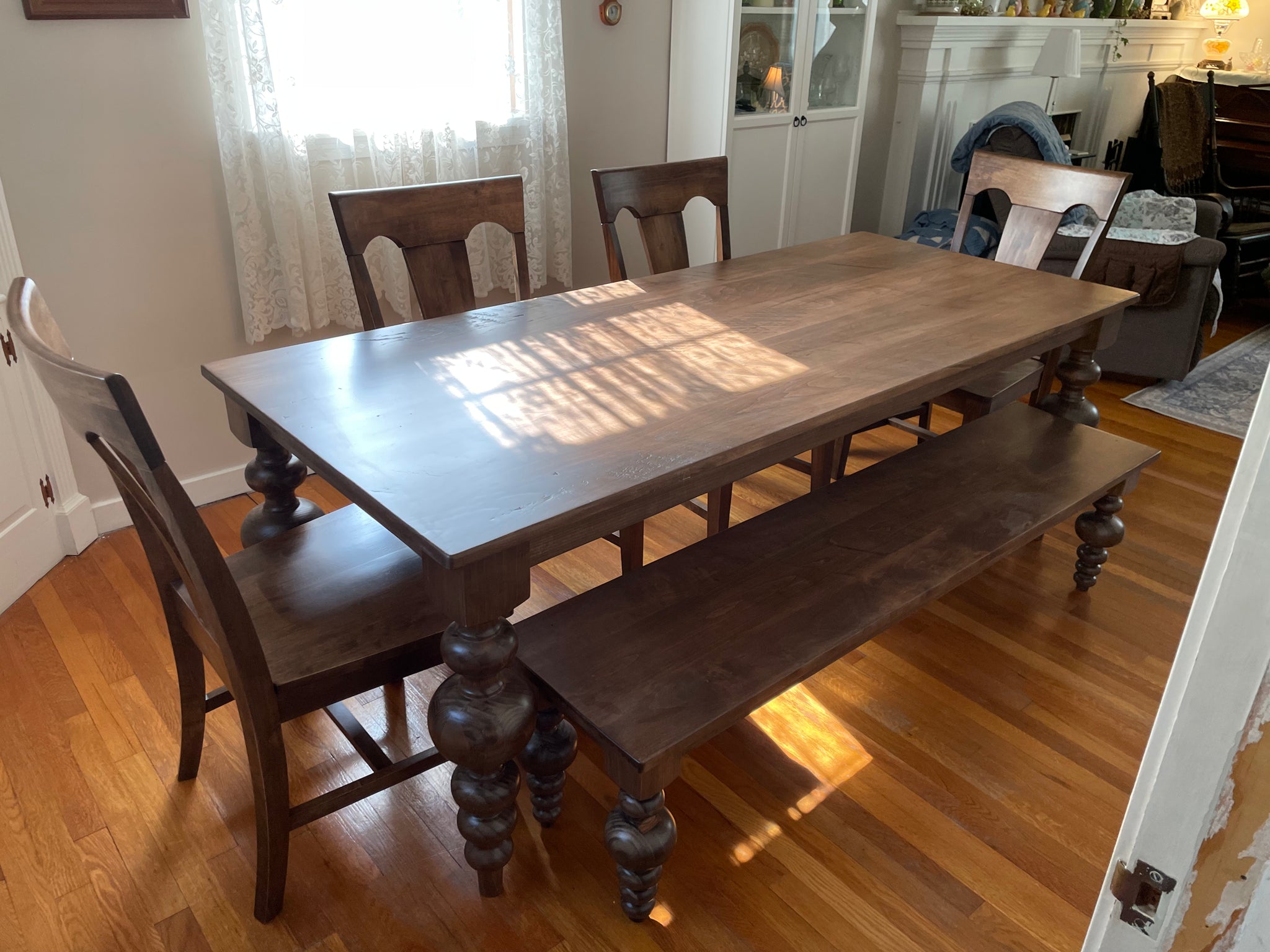Exactly How to Choose the Perfect Eating Room Table Legs for Your Home Design
Picking the suitable dining-room table legs is a nuanced process that calls for cautious factor to consider of different elements, including your room restrictions, aesthetic preferences, and functional demands. The interplay in between dimensions, designs, and materials can substantially affect the setting of your eating location, making it vital to approach this choice methodically. As you consider the myriad options readily available, it becomes clear that the ideal selection expands beyond plain look; it can improve your general eating experience. What variables should you prioritize to ensure your selection matches your home's special character?
Assess Your Dining Room
Evaluating your eating space is vital for selecting the right table legs that complement both appearances and functionality. Begin by gauging the dimensions of your dining location, including ceiling height, flooring room, and distance to other furnishings. This details will aid identify the proper size and elevation of your table, which straight influences the option of table legs.
Following, think about the design and format of your dining space. An open-concept design might benefit from table legs that offer aesthetic agility, such as slender metal or acrylic options. Conversely, an extra standard setting could call for strong wood legs that give a feeling of permanence.
Assess the existing shade scheme and products in your eating location. Harmonizing the table legs with these elements creates a natural look that boosts the general style. In addition, think concerning the performance required in your room. If you regularly hold large gatherings, consider legs that provide additional support and security.
Ultimately, a complete assessment of your eating area will direct you in making an informed choice, guaranteeing that your table legs not only boost the aesthetic allure but also serve sensible purposes.
Consider Your Style Preferences
When picking dining area table legs, it is crucial to assess your personal style preferences, as they considerably affect the general visual of your eating room. Your choice of table legs can either enhance or contrast with existing decoration, making it critical to align them with your favored indoor style theme.
If your home leans in the direction of a modern visual, take into consideration sleek metal or minimal wood legs that give a tidy, uncluttered look. For a much more conventional technique, luxuriant wood legs with elaborate makings can add a touch of style and class. Industrial designs profit from robust, resources such as redeemed timber and steel combinations, mirroring a sturdy beauty.
Furthermore, farmhouse and rustic designs often prefer sturdy, beefy legs that evoke a sense of heat and comfort. On the other hand, if your decoration is eclectic, you may choose unconventional shapes or a mix of materials to create aesthetic passion.

Evaluate Product Options
The choice of product for dining room table legs plays an essential duty in both resilience and visual charm. Common products consist of wood, steel, and composite alternatives, each offering distinctive features that can influence the total look and longevity of your table.
Wood pop over here is a timeless choice, understood for its heat and convenience. Hardwoods like oak and walnut give extraordinary strength and can be ended up in various spots to match any decoration. Nevertheless, softwoods like pine are extra vulnerable to damages and scrapes, making them less optimal for high-traffic locations.
Metal legs, commonly crafted from steel or aluminum, show modernity and commercial appeal. They are very sturdy and resistant to wear, making them suitable for family members with kids or regular celebrations (dining room table legs). In addition, metal can be completed in different colors, enhancing the personalization opportunities
Composite products, such as MDF or laminate, deal cost and varied designs. While commonly less sturdy than solid wood or steel, they can still give a trendy appearance and are commonly simple to maintain.
Eventually, the product you choose should straighten with your way of life, visual choices, and the degree of use your eating table will certainly experience.
Determine Elevation and Size
Picking the proper height and size for your dining-room table is essential for both capability and convenience. The typical elevation for dining tables generally ranges from 28 to 30 inches, enabling ample legroom for most individuals when seated. It is crucial to think about the measurements of your eating room and the kinds of chairs you plan to utilize.

Additionally, think about the percentages of your dining-room. A bigger table in a roomy area can produce a grand setting, while a smaller table works well in more intimate setups. Eventually, the ideal elevation and dimension will certainly harmonize with your general style and boost the dining experience for you and your visitors.
Explore Modification Opportunities

Additionally, the style of the legs can be tailored to fit numerous styles, such as rustic, contemporary, or commercial. For circumstances, tapered legs can evoke a mid-century modern-day feeling, while chunky, block-style legs may resonate with typical or farmhouse decor.
Home owners can also explore color surfaces, from all-natural timber discolorations to repaint, enabling them to match or contrast with the tabletop and surrounding design.
Additionally, leg elevation can be gotten used to suit specific seating arrangements or personal preferences, improving both convenience and performance.
Finally, unique embellishments, such as makings or useful content decorative brackets, can even more customize the table legs, making the dining experience not just a dish however a statement piece in the home. By considering these customization options, homeowners can create a dining room table that absolutely reflects their originality.
Verdict
Choosing the suitable dining-room table legs calls for careful my site factor to consider of various aspects, including the dimensions of the eating room, design preferences, material durability, and wanted elevation. Modification choices additionally boost the capacity to achieve a cohesive visual that matches the general design. By systematically evaluating these components, home owners can guarantee that the selected table legs not only fulfill functional requirements however also contribute positively to the dining experience and ambiance of the home.
Choosing the optimal eating space table legs is a nuanced process that needs careful consideration of different components, including your area constraints, aesthetic choices, and sensible requirements.Evaluating your eating space is essential for picking the right table legs that match both aesthetic appeals and functionality.When establishing size, gauge the area where the table will certainly be put to ensure it fits comfortably, enabling for at the very least 36 inches of clearance around the table for simple activity. A larger table in a large area can produce a grand atmosphere, while a smaller sized table functions well in more intimate settings.Selecting the suitable dining space table legs calls for cautious factor to consider of various aspects, including the measurements of the dining area, style choices, material toughness, and desired height.